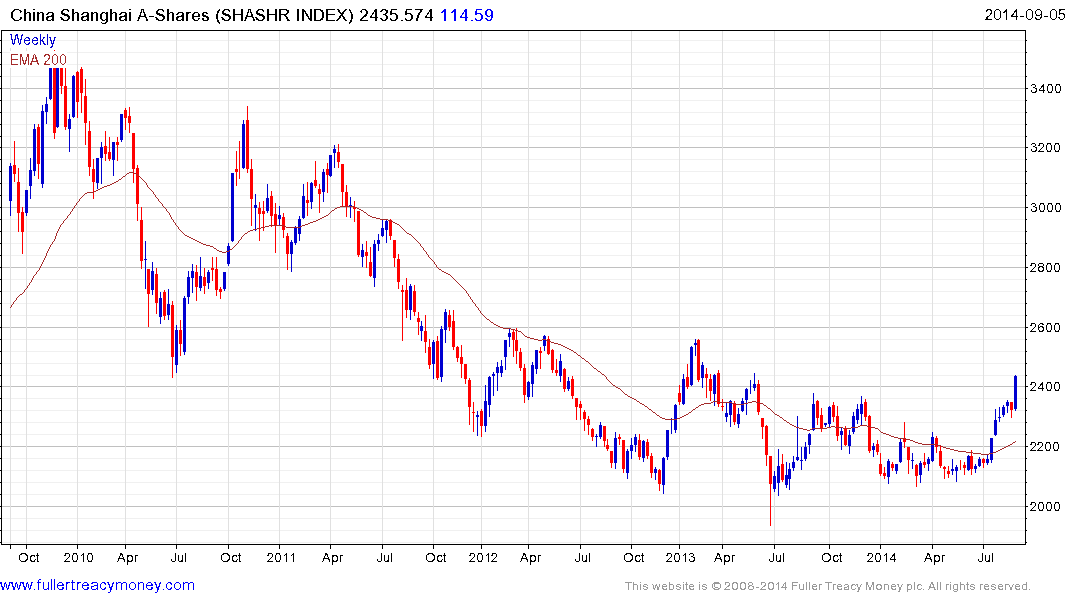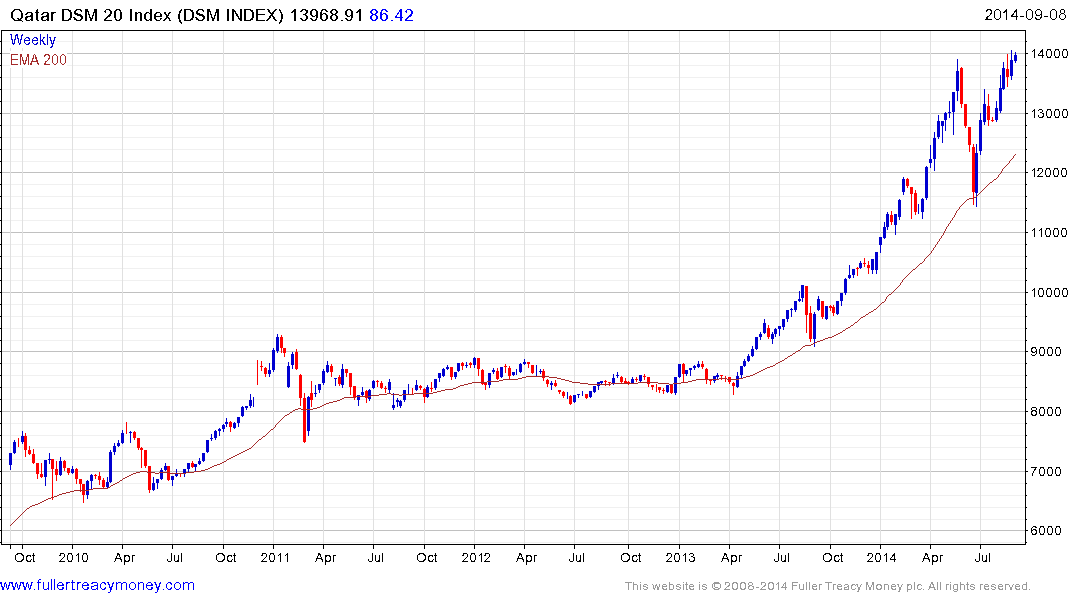Shanghai-Hong Kong Stock Connect : A big step towards greater market convergence
Thanks to a subscriber for this informative report from HSBC which may be of interest to subscribers. Here is a section:
This report, the third in a series about what Shanghai-Hong Kong Stock Connect means for different asset classes, analyses the implications and dynamics of this move towards market convergence for equities:
Short term: It’s initially about identifying price differences between A-shares and H-shares. Five months after the programme was announced, both markets are up 7-8%, and the Hang Seng China AH Premium Index, which tracks the average price difference for dual-listed companies, remains largely unchanged. However, across sectors there are significant differences between A-share and H-share prices. In general we believe this will lead to an investor preference for blue-chip companies in the A-share market and mid-cap growth companies in the Hong Kong market, which means the price difference should narrow gradually.
Medium term: The scheme should lead to substantially higher market turnover in Hong Kong and greater institutional participation in the A-share market. HSBC analyst York Pun estimates HKEx’s turnover could rise over 80% once all restrictions related to Stock Connect are removed. Similarly, we expect to see institutional investors, who currently own only 15% of the A-share market, become far more active in China. Foreign investors alone could drive up the level of institutional ownership of A-shares by at least 5-8ppts over the next 3-5 years through Stock Connect and existing channels such as the qualified investor schemes (QFII, RQFII).
Long term: We expect to see changes in the style of investment in both markets. The A-share market should move closer to Hong Kong – i.e. favouring value, large-cap and high dividend yield stocks – because of more foreign institutional participation, a lower risk-free rate and increasing dividend pay-outs. If we look at the net capital flow for both markets, defined as dividends paid by listed companies to shareholders minus the sum of equity fund raising plus stamp duty tax and stock trading commission, we find significant differences between Hong Kong and the A-share market. This is mainly driven by large-cap dividend yield stocks – the Hong Kong market recorded average positive cash flows of RMB130bn for the past three years, while the average for the A-share market was negative RMB65bn.
Here is a link to the report quoted above.
It might seem trite but simply put, weight of capital moves markets. Record low interest rates and declining bond yields are defined in some circles as justifying the high risk premium on equities but it is the weight of capital from underweight pension funds, companies buying back their own shares and retail money more recently that is sustaining high prices.

Everyone knows that China’s market is cheap. Everyone also knows that there are good reasons investors have been sceptical about putting money to work when there have been consecutive years of disappointment. The opening up of the link with Hong Kong greatly increases the potential for foreign participation in mainland shares. This is important because it represents one of the primary obstacles to Chinese equities being included in MSCI indices. This report from MSCI in March states they expect mainland shares to be admitted to the Emerging Markets index in 2015.

Take a look at the above chart of Qatar which was admitted to the Emerging Markets index in 2013. The result was a flood of capital hitting what had previously been a relatively boring market. Qatar is a minnow when compared to China. Admittance to the MSCI indices would represent a green light for funds tracking those indices but would also be a stamp of legitimacy for large cap funds seeking international exposure. It also result is a major reweighting of the Index. We’ve been anticipating the evolution of a bullish catalyst to reignite interest in the Chinese stock market. It is looking increasingly likely that the Shanghai-Hong Kong Connection might be it.
The healthcare and telecoms sectors have taken off recently but admittance to major large cap indices is likely to be of most benefit to some of China’s state owned enterprises (SEOs), not least the banks.
This article from the Economist focusing on the role of SECs may also be of interest.
Back to top


